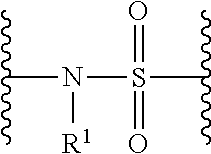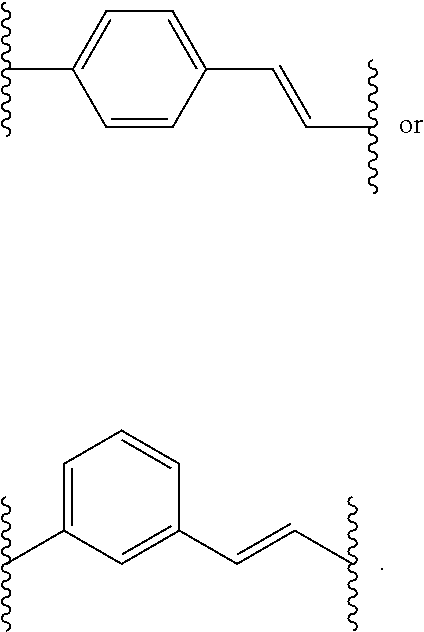Histone Deacetylase (HDAC) Inhibitors for the Treatment of Cancer
a technology of histone deacetylase and inhibitors, which is applied in the field of methods for treating cancer, can solve the problems of not being able to effectively treat long-term, multiple myeloma is difficult to diagnose early, and producing abnormally high levels of immunoglobulins, so as to reduce the viability and neoplastic cell characteristic
- Summary
- Abstract
- Description
- Claims
- Application Information
AI Technical Summary
Benefits of technology
Problems solved by technology
Method used
Image
Examples
example 1
Antiproliferative Activity of PXD-101 In Vitro
[0176]The effects of HDAC inhibitors on a variety of human multiple myeloma cell lines was tested in vitro to determine the potential clinical use of HDAC inhibitors (i.e., PXD-101) in the treatment of multiple myeloma.
[0177]CellTiter-Glo assays were used to assess the effects of PXD-101 on cell growth or viability of multiple myeloma cells in vitro. (See Table 1.) For example, six multiple myeloma cell lines (RPMI-8226, U266, EJM, LP-1, OPM-2 and KMS-12-BM) were used in the experiments. Cells were cultured, exposed to PXD-101 alone or in combination with a chemotherapeutic agent for a period of time, after which the number of viable cells was assessed using the CellTiter-Glo reagent from Promega (Madison, Wis.; Cat. No. G7572), as described below.
[0178]Cells were plated in 96-well plates at 3,000 cells / well in 90 μL of culture medium. The following day, various concentrations of PXD-101 alone or in combination with a chemotherapeutic ag...
example 2
Combination Studies
[0185]The effects of HDAC inhibitors in combination with standard chemotherapeutic agents were tested in vitro to determine the potential clinical use of an HDAC inhibitor (i.e., PXD-101), in combination with various chemotherapeutic agents (i.e., vincristine, doxorubicin, melphalan, dexamethasone).
[0186]Wst-1 proliferation assays were used to assess the anti-proliferative effects of drug combinations. The cell lines used in these experiments are shown in Table 2. Four myeloma cell lines (e.g., JJN3, LP-1, RPMI-8226, U266) were used in the combination studies. A commercial program, CalcuSyn, was employed to determine whether the combined effects are synergistic, antagonistic, or additive.
[0187]Cells were cultured, exposed to PXD-101 alone or in combination with a chemotherapeutic agent, and incubated for a time, and the number of viable cells was then assessed using the Cell Proliferation Reagent WST-1 from Boehringer Mannheim (Cat. No. 1 644 807), described below...
example 3
Antiproliferative Activity of PXD-101 in Combination with Bortezomib In Vitro
[0205]The effects of HDAC inhibitors in combination with the chemotherapeutic agent bortezomib was tested in vitro to determine the potential clinical use of an HDAC inhibitor (i.e., PXD-101 or SAHA), in combination chemotherapy.
[0206]CellTiter-Glo cell viability assays (as described above) were used to assess the anti-proliferative effects of PXD-101 in combination with bortezomib (FIG. 2). For comparison, the anti-proliferative effects of SAHA in combination with bortezomib were measured (FIG. 3). The multiple myeloma cell line U266 was used in the combination studies. U266 cells were treated with bortezomib at 1 nM for 6 hours, followed by a cotreatment for 72 hours with a combination of bortezomib at 1 nM and PXD-101 at 130 nM (FIG. 2). Similarly, U266 cells were treated with bortezomib at 1 nM for 6 hours, followed by a cotreatment for 72 hours with a combination of bortezomib at 1 nM and SAHA at 130 n...
PUM
 Login to View More
Login to View More Abstract
Description
Claims
Application Information
 Login to View More
Login to View More - R&D
- Intellectual Property
- Life Sciences
- Materials
- Tech Scout
- Unparalleled Data Quality
- Higher Quality Content
- 60% Fewer Hallucinations
Browse by: Latest US Patents, China's latest patents, Technical Efficacy Thesaurus, Application Domain, Technology Topic, Popular Technical Reports.
© 2025 PatSnap. All rights reserved.Legal|Privacy policy|Modern Slavery Act Transparency Statement|Sitemap|About US| Contact US: help@patsnap.com



